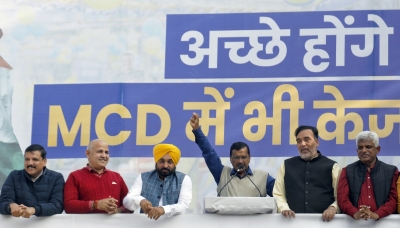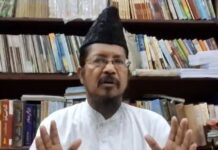
<br>Born out of the Anna Hazare Movement, the party was formally formed on November 26, 2012, and emerged on the national political landscape in December 2022 after making inroads in Gujarat.
After the landslide victory in Punjab which was the first state where the party succeeded in forming the government outside the ‘home state’ Delhi, the AAP also succeeded in making inroads in Gujarat as the party was able to get five assembly seats for the first time.
By the end of the year the AAP emerged as the single largest party in the Municipal Corporation of Delhi (MCD) elections, ending the 15-year-long rule of the Bharatiya Janata Party in the civic body.
Talking to IANS, AAP Rajya Sabha MP Sanjay Singh said, “The year 2022 has been as amazing and marvellous for us as 2013 was when for the first time after one year of inception of the party we formed the government in Delhi.”
The year 2022 has given the accreditation of national party for the AAP which has made way for the expansion of the party across the country, said Sanjay Singh.
Since the party was formed, its political journey has been full of dramatic twists and turns. Just after one year of formation, the party made its electoral debut in the 2013 Delhi Legislative Assembly election and emerged as the second largest party with 28 seats after the BJP. However, in the absence of an absolute majority, the BJP could not form the government.
Consequently, the AAP formed the government with support from Congress members of the assembly that may be called the party’s first aberration as it rode on an anti-corruption wave against the same Congress party. Kejriwal became the Chief Minister of Delhi, but his government resigned in 49 days.
Following the 2015 elections, the AAP won 67 of the 70 seats in the assembly, leaving the BJP with just three seats and the Congress with none. Again, the AAP defeated the BJP in the subsequent 2020 Delhi Legislative Assembly election, winning 62 seats.
“Undoubtedly, the year 2022 has been a marvellous year for all of us. We registered victory in the Punjab Assembly election, then for the first time won seats in Gujarat and now we have succeeded in the MCD election too. So this year has been a successful year and we hope that 2023 will also be the same for the party,” AAP senior leader Durgesh Pathak told IANS.
After the party achieved the status of a national party, the AAP held its national council meeting on December 18 to formulate the strategy for its expansion across the country. The party is eyeing to further advance the organisation-building efforts at the national level in the next six months.
In the first phase, the work of nationwide organisation expansion will be carried out on a priority basis in states with upcoming assembly elections, said a party leader.
With the concept of the ‘Delhi Model of Governance’, the party is hopeful to expand its genesis across the country. The Delhi Model of Governance which the AAP leaders call the ‘Kejriwal Model of Governance’ rests on three-four important aspects of free electricity and free water with a cap, free travel for women and the most-claimed government schools’ education system.
The party, however, is being criticised for these schemes being called ‘Free Ka Revdi’ by the opposition. But the AAP says they are welfare schemes for the citizens.
With nine states to go for assembly polls in 2023, the party has started strengthening its cadres at the booth level across the country.
“In which states we are going to contest the polls will be decided by the national leadership, however, the process has been started across the country to strengthen the party at booth levels”, said Sanjay Singh. The party is now planning to contest every seat in the civic polls of Uttar Pradesh, he said.
–IANS<br>avr/bg





























